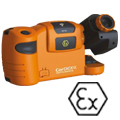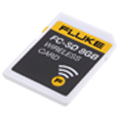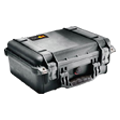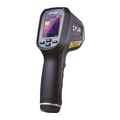Thermal Imaging Selection Guide
Helping you to select from our extensive range of thermal imaging cameras
Downloads
Associated Products
Introduction
Thermal Imaging is a method of measuring the temperatures of objects using wavelengths of light emitted in the infrared spectrum. We perceive this as heat and, for that reason, it is also known as Infrared Thermography.
Sections in this guide
What is Thermal Imagery?
Thermal imaging is a non-contact technology that converts the infrared waves into an image that portrays temperature. The temperature range of objects in the image is differentiated using a spectrum of colours.
Hover over the Thermal Imaging Camera on the left to see how a typical image would look.

As a non-contact technology, thermal imaging is efficient, safe and easy. Detecting temperature rises, instabilities or hot spots in just a few seconds can identify and pinpoint potential failures in equipment or systems before they cause expensive downtime, power loss or damage. It is invaluable in areas where equipment cannot be shut down, cannot be easily accessed, or where physical contact with the object would alter its temperature and skew the results.
RS Pro Thermal CamerasLocating hot spots or cold spots is fast with thermal imaging. The technology helps to maintain productivity through rapid diagnosis and by its ability to measure without shutting down production equipment or processes.

In addition, enhanced safety comes from being able to measure temperature from a distance - ideal for eliminating risk from applications that involve moving parts, high levels of heat or are in dangerous environments.
Thermal Imagery - Uses
Every thermal imaging requirement is likely to be different. This will determine the characteristics of the instrument needed. But there is a broader initial split in thermal imaging applications adopted by many camera manufacturers: buildings or industrial.
Buildings
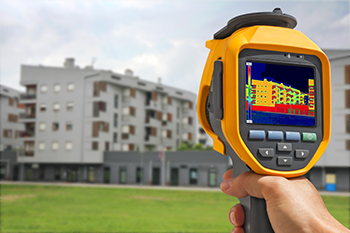
Instruments designed for use in buildings are typically used to detect issues within the fabric of construction, and for problems that may be obscured from view or behind walls. Applications include checking the effectiveness of insulation, detecting moisture and leaks, testing underfloor heating systems and central heating appliances, and tracking down leaks from ventilation channels.
View ProductsIndustry
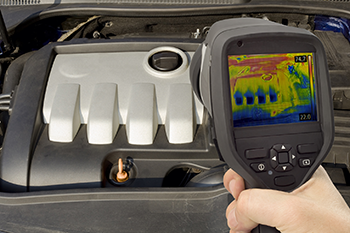
Industrial thermal imaging instruments are used as process validation tools in electric, electronic, electro-mechanical and mechanical engineering applications. These include machine tools, production line components, manufacturing systems, and so on. As well as preventative maintenance applications and scheduled service programmes.
View ProductsPoints to Consider
RS wants to make choosing your Thermal Imaging camera as easy for you as possible. To help you buy the right product for your job, we have put together this handy guide to ensure your Thermal Imaging camera is right for you.
Click the coloured tabs on the right to read points to consider.
Resolution
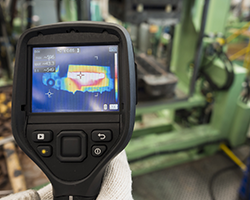
The resolution of the thermal imaging sensor determines the quality of the image that will be portrayed. The higher the sensor resolution, the sharper and more accurate a single point will be on the image.
Higher resolutions permit smaller objects to be measured from a greater distance, and this fact alone can influence the purchasing decision based on the user's expected operational environment. Detector resolution should not be confused with screen resolution.
A high resolution screen can only be as good as the resolution of the detector.
Temperature Range
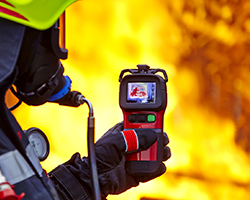
Also to consider is the available temperature range of an instrument. Not all applications will require a measurement range that extends to cover very high heat levels. Imaging devices offering a wider temperature range will use sensors that are more expensive.
Sensitivity
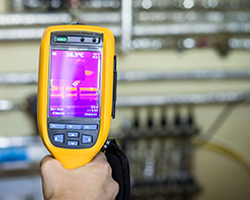
Sensitivity is the third attribute to consider. It represents the smallest difference in temperature that the infrared sensor can distinguish. Devices with higher thermal sensitivities can detect smaller temperature differences to deliver an image with greater accuracy. Measured in milliKelvins (mK), the lower the mK number of a camera, the more sensitive it will be. This means that the camera will detect a broader range of temperature differences and display more colours on its screen.
Data
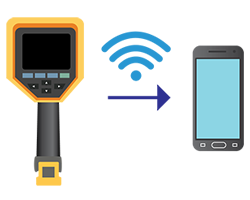
Users can make instant decisions based on the image shown on the screen. This may be to shut the machine down, schedule preventative maintenance, or even do nothing as all appears fine.
Many instruments store the measured data in memory and on removable cards to permit offline storage, analysis and reporting. Some also add extra functionality like Wi-Fi connectivity to allow direct connections to other devices. Here, measurement data and visual images can be exported directly to smartphones, tablets or laptops to give timely mobile analysis and reporting, plus easy access to information sharing by email and other channels.
Resolution
Temperature Range
Sensitivity
Data
Glossary of Terms
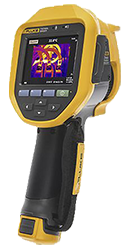
Click to expand and read about the terms and attributes for Thermal Imaging
Infrared Waves
Infrared Waves - Infrared Waves - Infrared waves are a part of the electromagnetic spectrum that, due to their wavelength, are invisible to the human eye. Objects which have absorbed Infrared waves will emit heat. This heat can be seen with the use of a thermal imaging camera.
Non-Contact Technology
Non-Contact Technology - The sensor within the Thermal Imaging camera, allows for the user to stand at a safe distance away from equipment or systems.
Hot Spots and Cold Spots
Hot Spots and Cold Spots - These are terms used to describe the difference in temperature changes seen through the display on the Thermal Imaging camera.
Resolution
Resolution - Resolution defines how many individual pixels a Thermal Imaging sensor may have. Resolution can have a dramatic influence on the amount of detail and information recorded within an image. In theory, the higher the resolution the more detailed an image will be.
Thermal Sensitivity
Thermal Sensitivity - Thermal Sensitivity is the measurement of tiny differences in temperature. This is measured using the unit mK (milliKelvins).
mK (milliKelvins)
mK (milliKelvins) - mK (milliKelvins) are the unit of measurement used to measure thermal sensitivity. The lower the mK value, the more sensitive the camera, which will result in a more detailed thermal display.
Technologies we Offer
Use one of these links to view the products on the RS website




